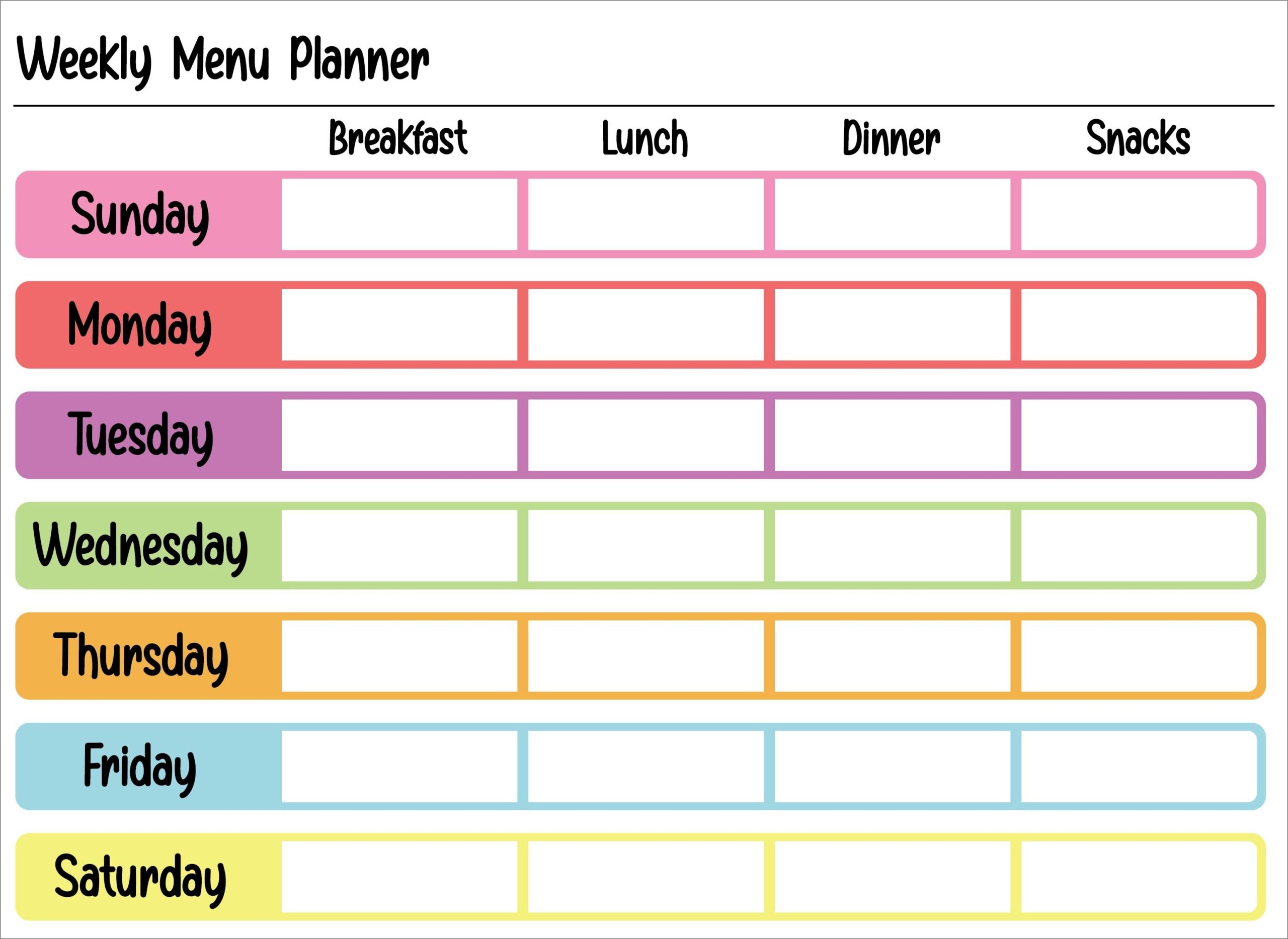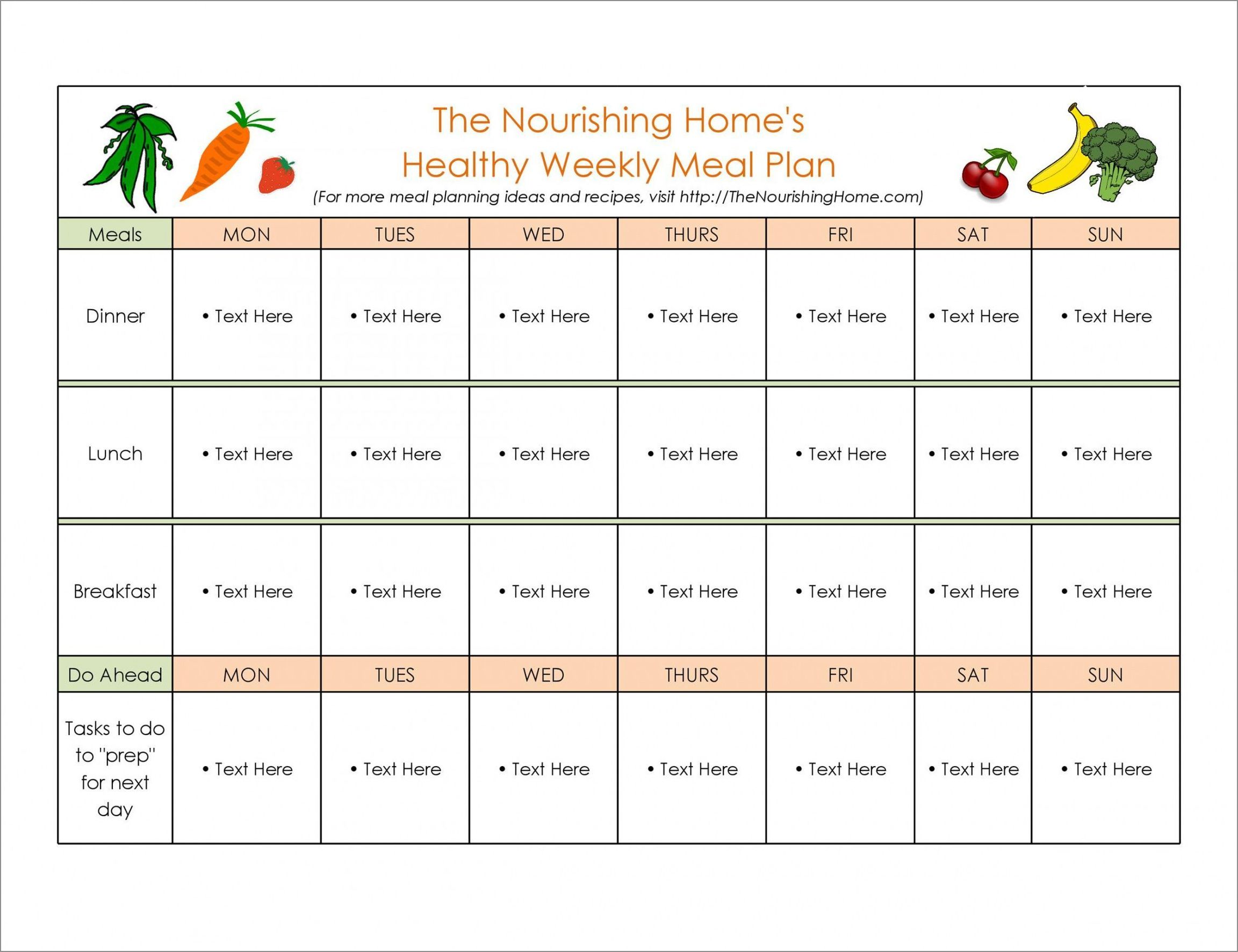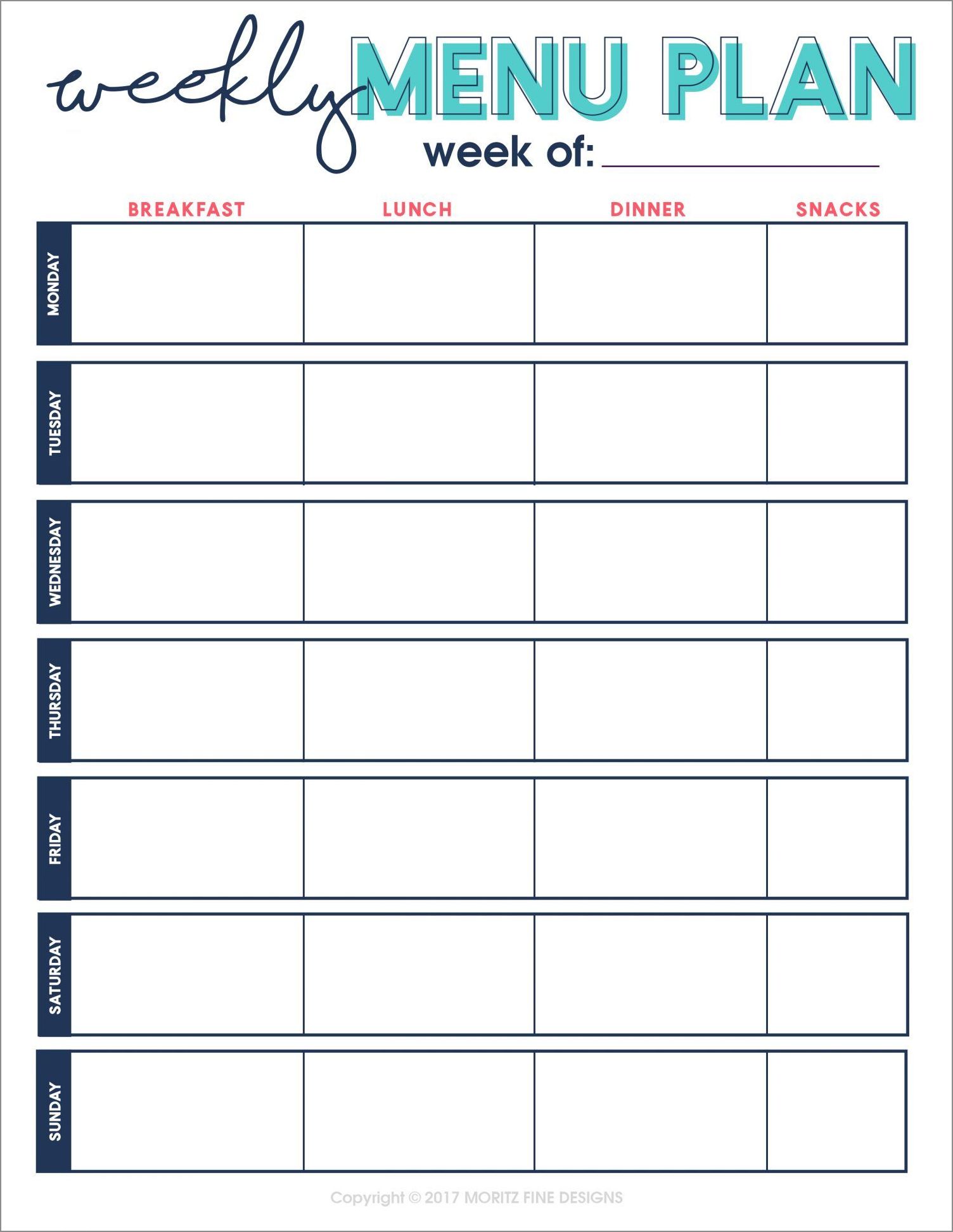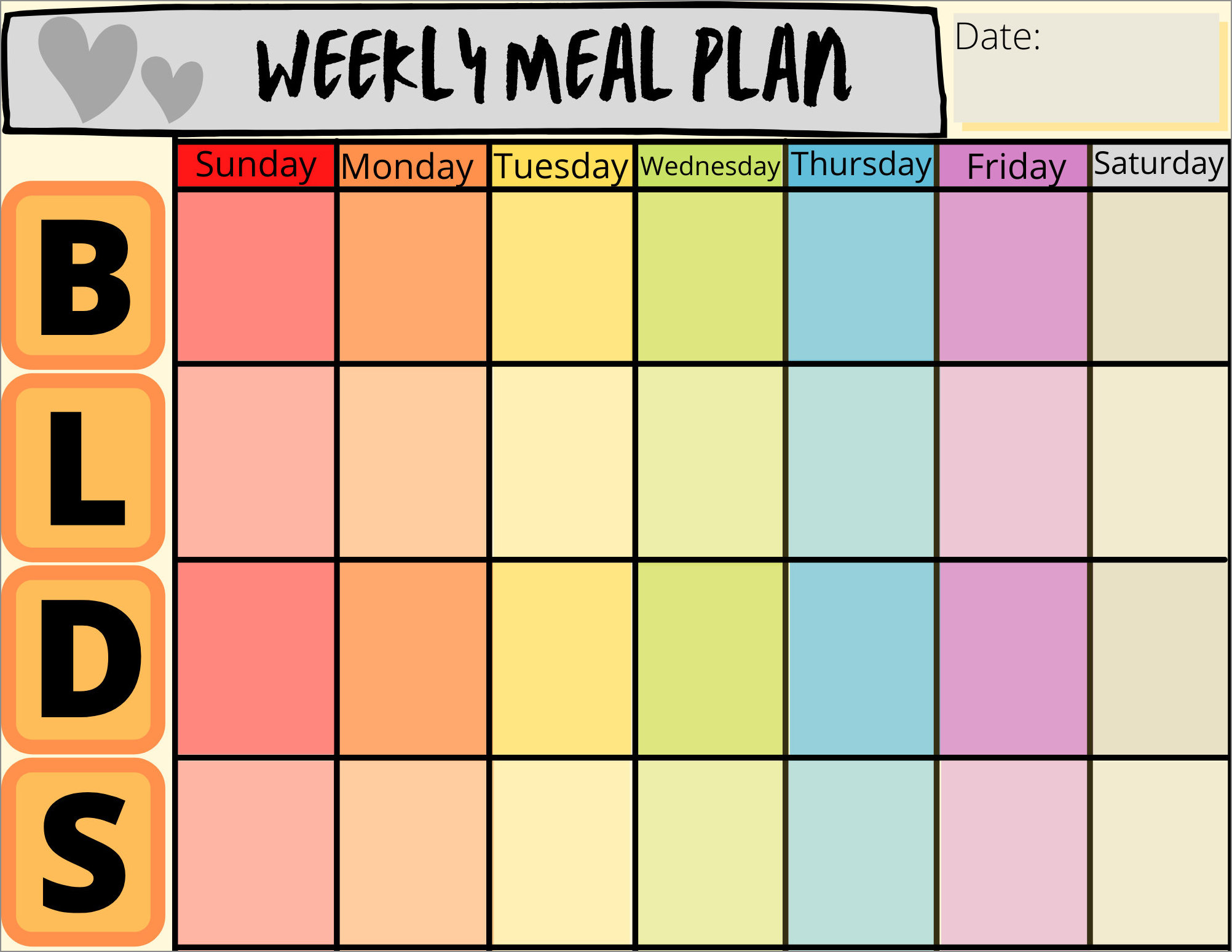Do you find yourself constantly wondering what to cook for your meals each week? Are you tired of wasting time and money on last-minute grocery shopping trips? Creating a weekly food schedule can help solve these problems and make your life easier.
In this article, we will provide you with a step-by-step guide on how to create a weekly food schedule that will save you time, money, and stress.
Why Should You Create a Weekly Food Schedule?
Creating a weekly food schedule offers numerous benefits. Here are some reasons why you should consider implementing a food schedule:
- Save time: By planning your meals, you can save time on deciding what to cook each day. This allows you to spend less time in the kitchen and more time doing the things you love.
- Save money: With a food schedule, you can plan your meals based on what you already have in your pantry and fridge, reducing the need for last-minute grocery shopping trips and impulse purchases.
- Eat healthier: When you plan your meals ahead of time, you have the opportunity to include a variety of nutritious ingredients in your diet. This can help you make healthier choices and avoid relying on fast food or unhealthy snacks.
- Reduce food waste: Planning your meals allows you to use up ingredients before they go bad, reducing food waste and saving you money in the long run.
- Reduce stress: Knowing what you’re going to cook each day eliminates the stress of coming up with last-minute meal ideas. It also ensures that you have all the necessary ingredients on hand, preventing any panicky trips to the grocery store.
How to Create a Weekly Food Schedule
Now that you understand the benefits of a weekly food schedule, let’s dive into the step-by-step process of creating one:
1. Assess Your Schedule and Dietary Needs
Before you start planning your meals, take a moment to assess your schedule and dietary needs. Consider factors such as:
- Your work schedule
- Your family’s schedule
- Any dietary restrictions or preferences
- The number of meals you need to plan for
Understanding these factors will help you determine the number of meals you need to plan for and the types of dishes that will work best for your lifestyle.
2. Choose Your Planning Method
There are several ways to plan your meals, so choose a method that works best for you:
- Pen and paper: Write down your meal plan for the week on a piece of paper or in a notebook.
- Electronic calendar: Use an electronic calendar, such as Google Calendar, to create your meal schedule.
- Meal planning apps: Explore various meal planning apps that can help you organize your meals and generate shopping lists.
Choose a method that you find convenient and easy to use.
3. Gather Recipe Inspiration
Look for recipe inspiration to help you plan your meals. You can find ideas from various sources:
- Cookbooks
- Food blogs
- Online recipe websites
- Family recipes
- Personal favorites
Consider including a mix of familiar dishes and new recipes to keep your meals interesting.
4. Plan Your Meals
Start by deciding what you want to eat for breakfast, lunch, dinner, and snacks each day. Consider the following:
- Your dietary needs
- The ingredients you have on hand
- The cooking time required for each meal
Ensure that your meals are balanced, incorporating a variety of proteins, vegetables, and whole grains.
5. Create a Shopping List
Once you have your meal plan, create a shopping list of all the ingredients you will need for the week. Check your pantry and fridge to see if you already have some of the items on hand.
Organize the shopping list by sections, such as produce, dairy, and pantry staples, to make your grocery shopping trip more efficient.
6. Prepare in Advance
To save even more time during the week, consider prepping some ingredients in advance. For example, you can chop vegetables or marinate meat ahead of time. This will make cooking your meals quicker and more convenient.
7. Stick to Your Schedule
Once you have your weekly food schedule in place, commit to sticking to it as much as possible. This will help you stay organized and ensure that you have all the necessary ingredients on hand when it’s time to cook.
8. Evaluate and Adjust
After a week or two of following your food schedule, take some time to evaluate how well it worked for you. Reflect on the meals you enjoyed the most and any changes you would like to make. Adjust your future meal plans accordingly to keep things fresh and exciting.
Sample Weekly Food Schedule



Here’s an example of what a weekly food schedule could look like:
- Monday: Breakfast – Overnight oats; Lunch – Quinoa salad with roasted vegetables; Dinner – Baked salmon with steamed broccoli and brown rice; Snack – Greek yogurt with berries.
- Tuesday: Breakfast – Avocado toast; Lunch – Chickpea salad wrap; Dinner – Chicken stir-fry with mixed vegetables and rice noodles; Snack – Apple slices with almond butter.
- Wednesday: Breakfast – Veggie omelet; Lunch – Lentil soup with whole wheat bread; Dinner – Spaghetti bolognese with a side salad; Snack – Carrot sticks with hummus.
- Thursday: Breakfast – Smoothie bowl; Lunch – Quinoa and black bean burrito bowl; Dinner – Grilled chicken with roasted sweet potatoes and green beans; Snack – Trail mix.
- Friday: Breakfast – Whole grain pancakes with fresh fruit; Lunch – Caprese salad sandwich; Dinner – Shrimp stir-fry with quinoa; Snack – Greek yogurt with granola.
- Saturday: Breakfast – Scrambled eggs with spinach and feta cheese; Lunch – Vegetable curry with basmati rice; Dinner – Grilled steak with roasted potatoes and asparagus; Snack – Banana with peanut butter.
- Sunday: Breakfast – Breakfast burrito; Lunch – Spinach and strawberry salad with grilled chicken; Dinner – Baked cod with lemon and herbs, served with quinoa and steamed vegetables; Snack – Mixed nuts.
Conclusion
A weekly food schedule can be a game-changer in your meal-planning routine. By taking the time to plan your meals, you can save time, money, and stress. Follow the step-by-step guide provided in this article, and you’ll be well on your way to creating a weekly food schedule that works for you. Bon appétit!
Weekly Food Schedule Template Word – Download
